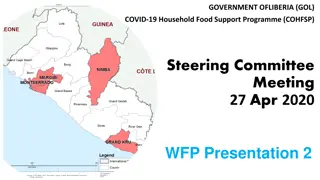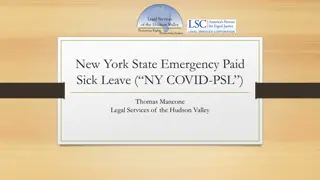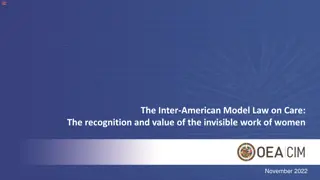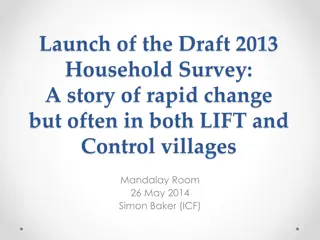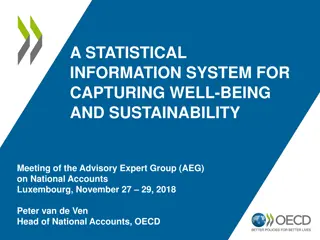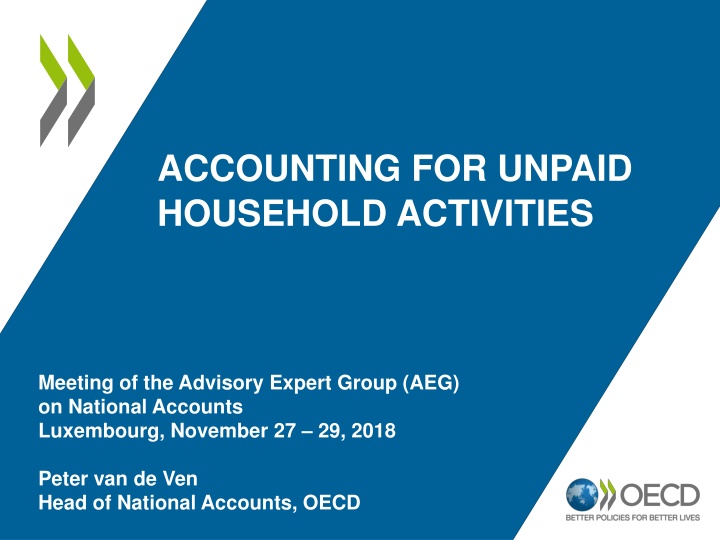
Unpaid Household Activities in National Accounts
Explore the challenges and impact of unpaid household services on national accounts, highlighting the connection to the digital economy and the need for proper recognition within economic frameworks like the 2008 SNA standards.
Download Presentation

Please find below an Image/Link to download the presentation.
The content on the website is provided AS IS for your information and personal use only. It may not be sold, licensed, or shared on other websites without obtaining consent from the author. If you encounter any issues during the download, it is possible that the publisher has removed the file from their server.
You are allowed to download the files provided on this website for personal or commercial use, subject to the condition that they are used lawfully. All files are the property of their respective owners.
The content on the website is provided AS IS for your information and personal use only. It may not be sold, licensed, or shared on other websites without obtaining consent from the author.
E N D
Presentation Transcript
ACCOUNTING FOR UNPAID HOUSEHOLD ACTIVITIES Meeting of the Advisory Expert Group (AEG) on National Accounts Luxembourg, November 27 29, 2018 Peter van de Ven Head of National Accounts, OECD
Introduction One of the most persistent criticisms on the System of National Accounts is the non-recognition of unpaid household services A clear link with the digital transformation of the economy: Participative role of consumers (booking flights and holidays, self-service at supermarkets, etc.) => blurring the delineation between market production, unpaid household activities and leisure Free services financed via advertising and provision of data (Internet, social media, etc.) Free assets produced by communities of people (Wikipedia, open-source software)
Introduction 2008 SNA standards and other conceptual issues Basic methodology and measurement issues Results Way forward
2008 SNA standards 6.24: Economic production may be defined as an activity carried out under the control and responsibility of an institutional unit that uses inputs of labour, capital, and goods and services to produce outputs of goods or services 6.26: activities undertaken by households that produce services for their own use are excluded from the concept of production in the SNA, except for services provided by owner- occupied dwellings and services produced by employing paid domestic staff
2008 SNA standards 6.30: , the reluctance of national accountants to impute values for the outputs, incomes and expenditures associated with the production and consumption of services within households is explained by a combination of factors, namely the relative isolation and independence of these activities from markets, the extreme difficulty of making economically meaningful estimates of their values, and the adverse effects it would have on the usefulness of the accounts for policy purposes and the analysis of markets and market disequilibria
Conceptual issues Primary concerns of the 2008 SNA relate more to practical measurement type of issues Impact on, and interpretability of, other headline indicators (e.g. household disposable income) Delineation with leisure time, e.g. travelling time, and eating and drinking time, but also e.g. gardening Proper allocation of simultaneous activities, e.g. taking care of children while cooking or cleaning Services from unpaid household activities can often not be put on a par with related market services, e.g. taking care of children by (grand)parents versus paid childcare in a kindergarten
Basic methodology (1) Starting point: time use surveys Valuation of services: Market-equivalent prices of similar services Cost-based approaches Not easy to define (units of) services provided within households, therefore often rely on cost-based approaches: Labour costs Use of intermediate goods and services Consumption of fixed capital
Basic methodology (2) Main valuation issue regarding labour costs: Replacement cost approach: wage costs of similar activities Opportunity cost approach: income foregone Intermediate consumption: difficult to delineate relevant consumption categories, but no impact on value added and GDP Consumption of fixed capital (CFC): Starting point: certain categories of consumer durables Perpetual Inventory Method to estimate CFC But appropriate delineation? service lives?
Measurement issues Time use survey data of good quality needed: Frequency: data often only available every 3-5 years Timeliness: time lag of several years Consistency: quite a number of discontinuities over time, also issues in relation to international comparability Granularity: for more detailed analysis, e.g. the impact of digital transformation, more details are needed Issues related to measuring productivity over time Issues related to capturing significant differences in quality of output (e.g. cooking of meals)
Way forward? Improving granularity, frequency and timeliness of time use surveys: => big data? => using and integrating other official data sources (e.g. labour force survey)? Developing an internationally agreed methodology Looks for ways to motivate countries to compile estimates at a regular interval Make unpaid household activities part of a broader framework of national accounts (see next presentation)
Questions and issues for the AEG The AEG is requested to provide its opinion on: how to move forward the agenda on monitoring unpaid household activities in an internationally comparable way, and to motivate countries to compile such estimates on a more regular basis, say every 3-5 years developing a more standardized methodology for measuring unpaid household activities, to arrive at internationally comparable results 18








